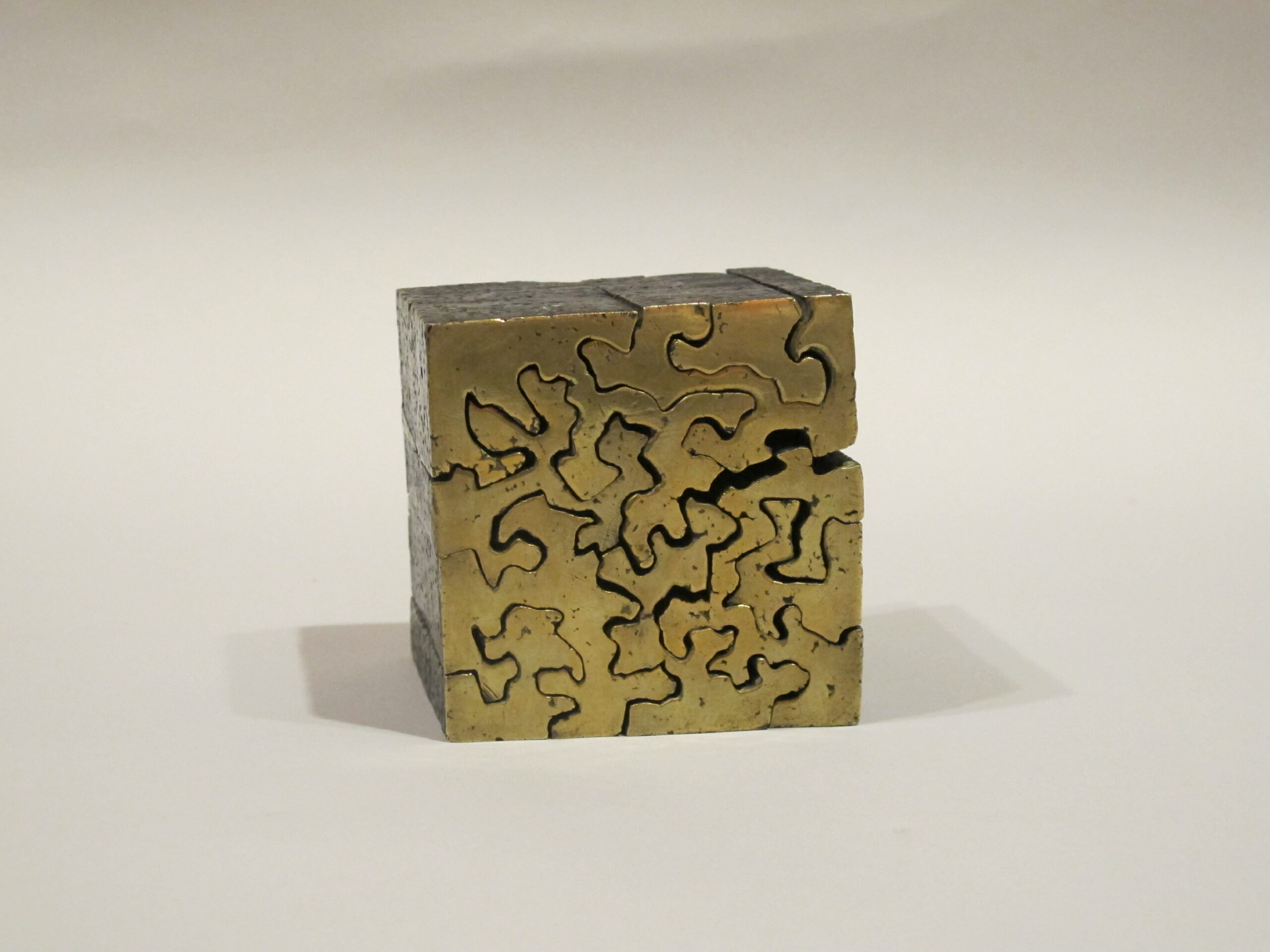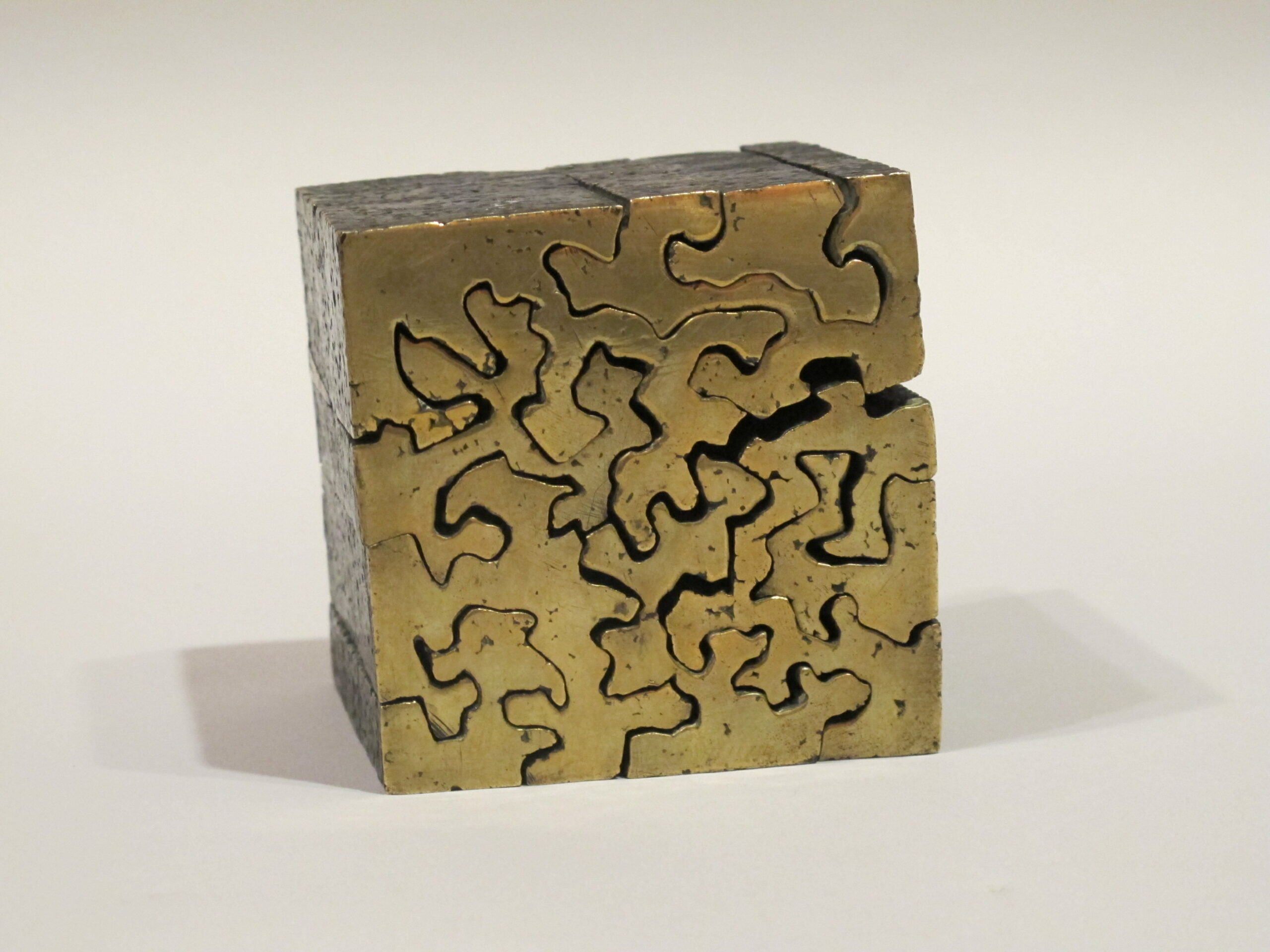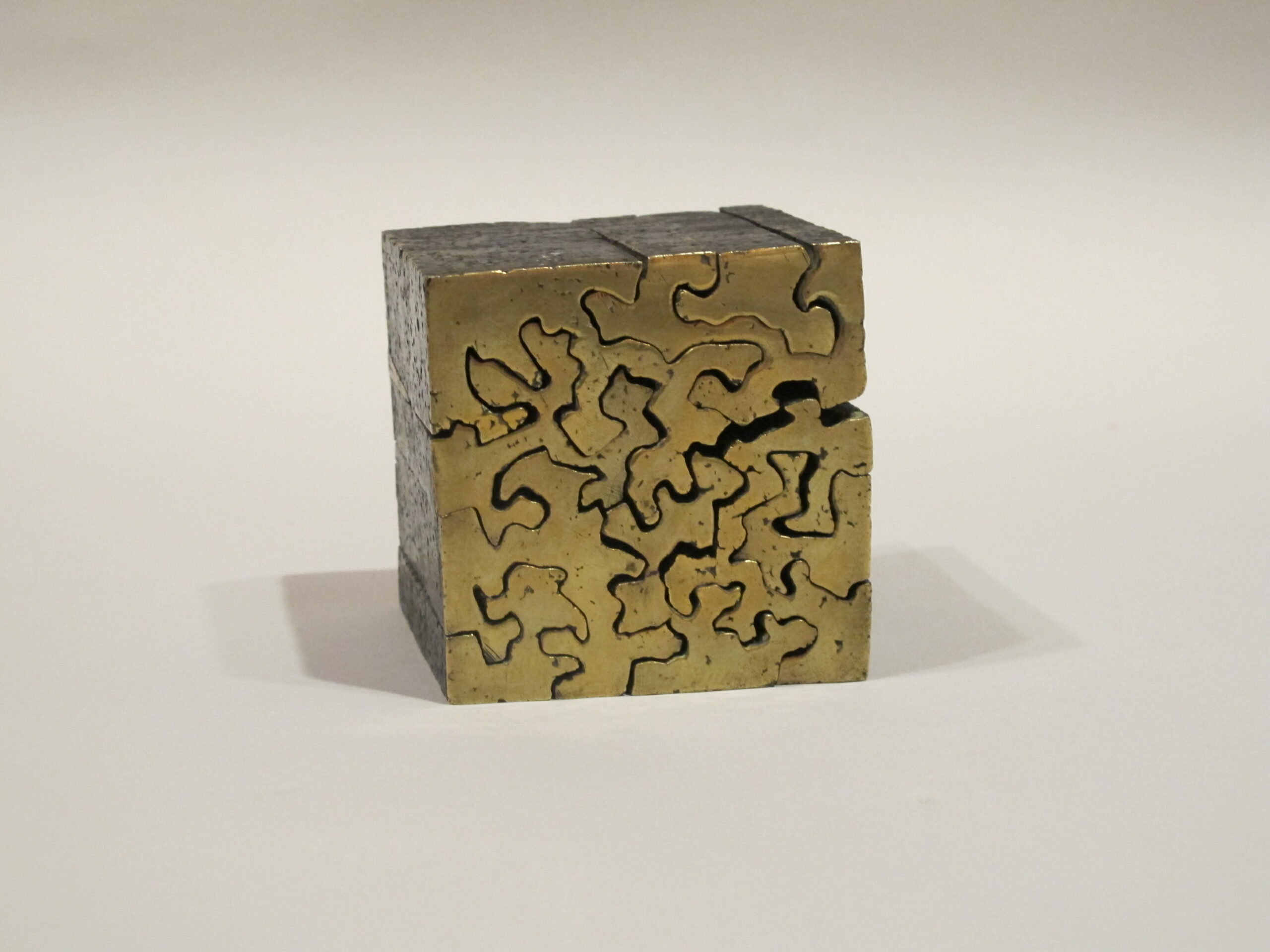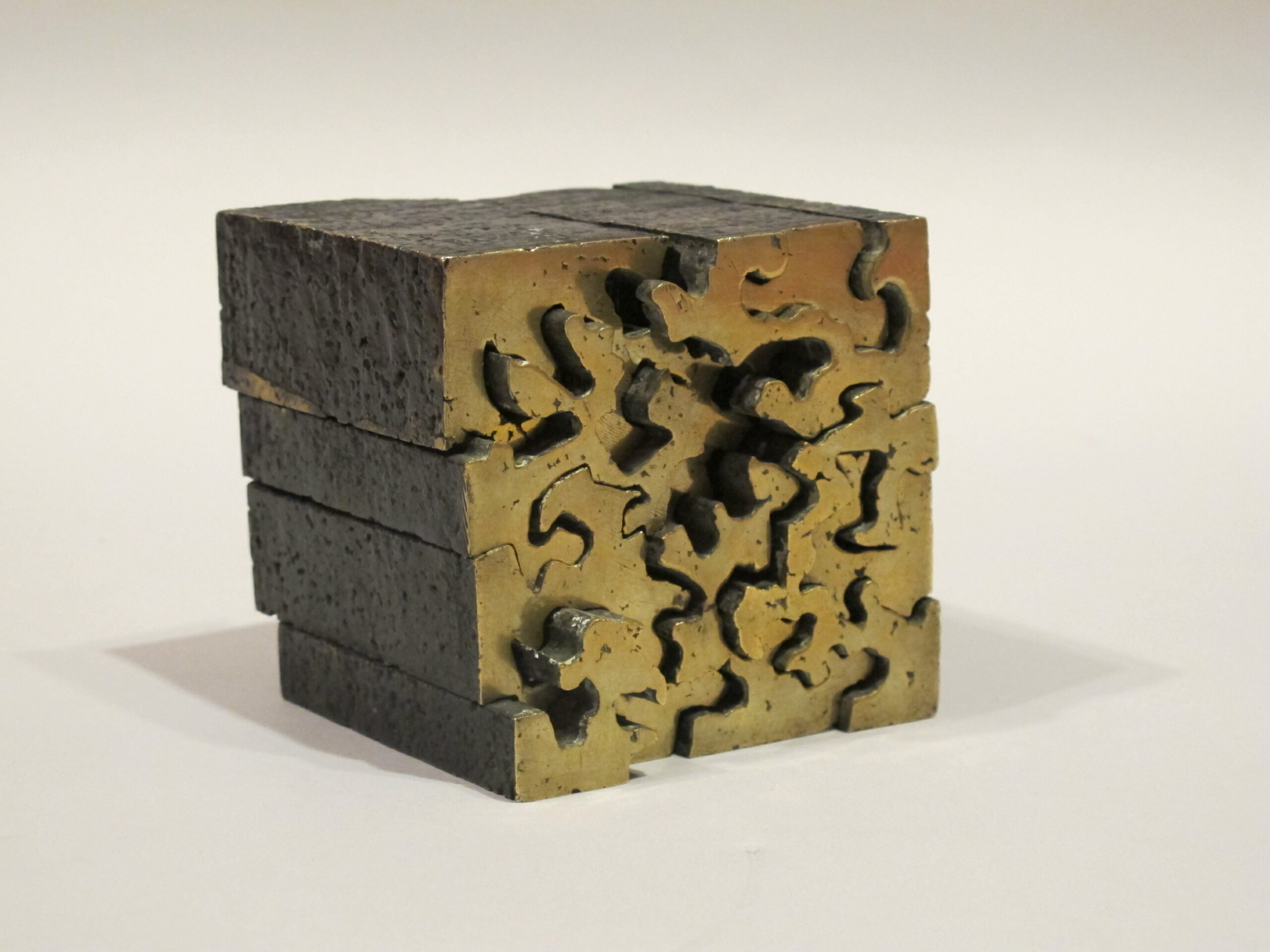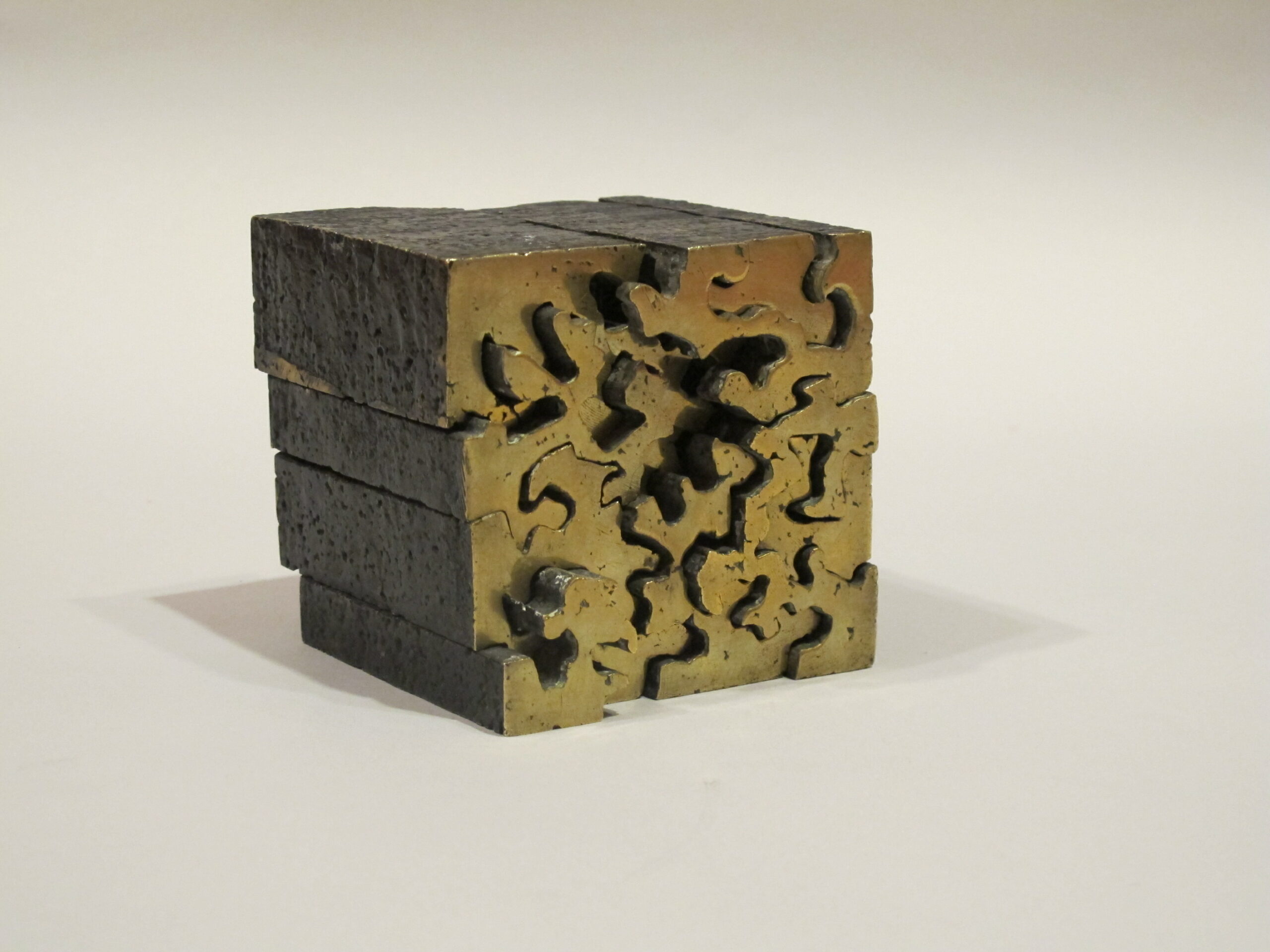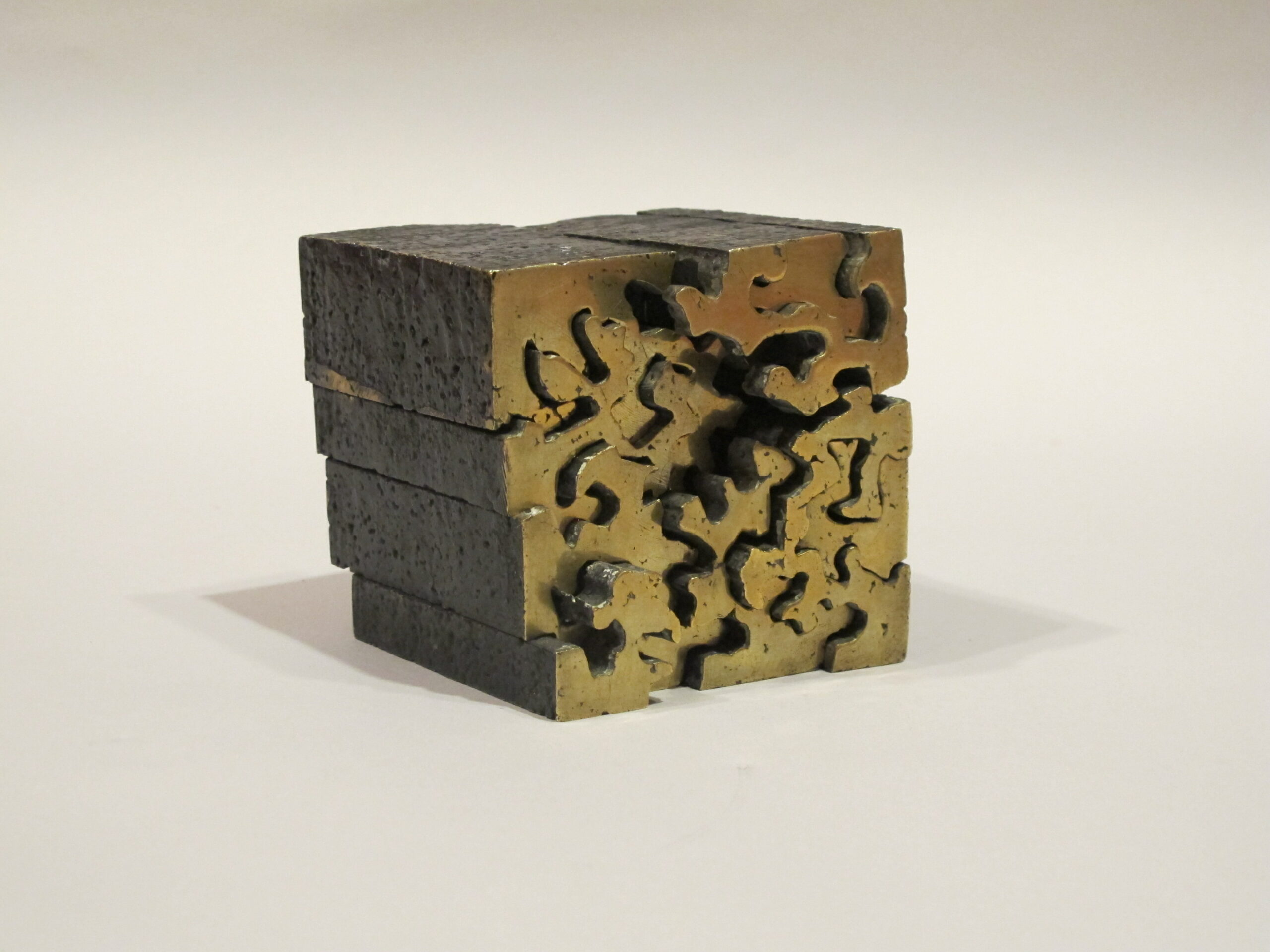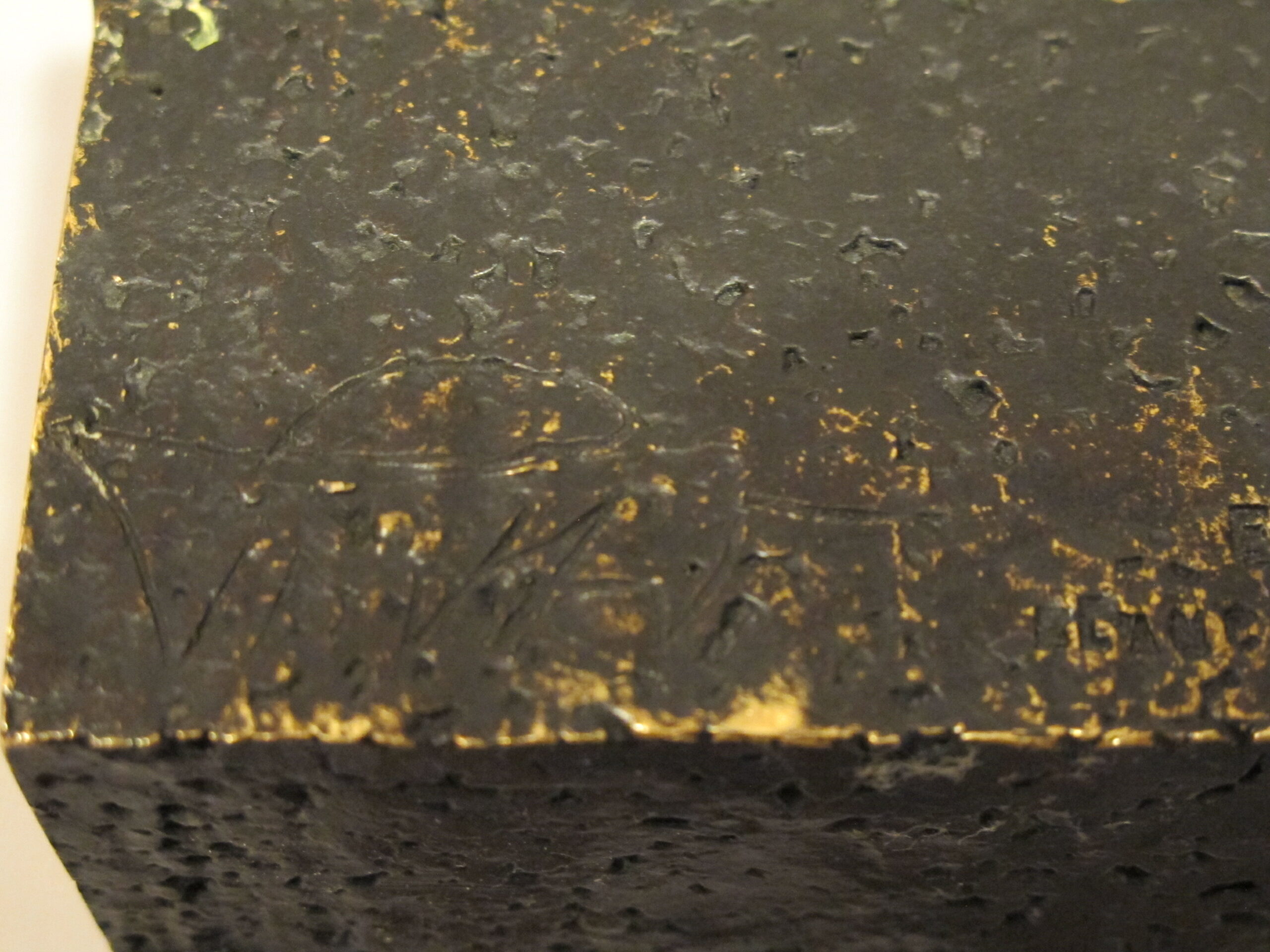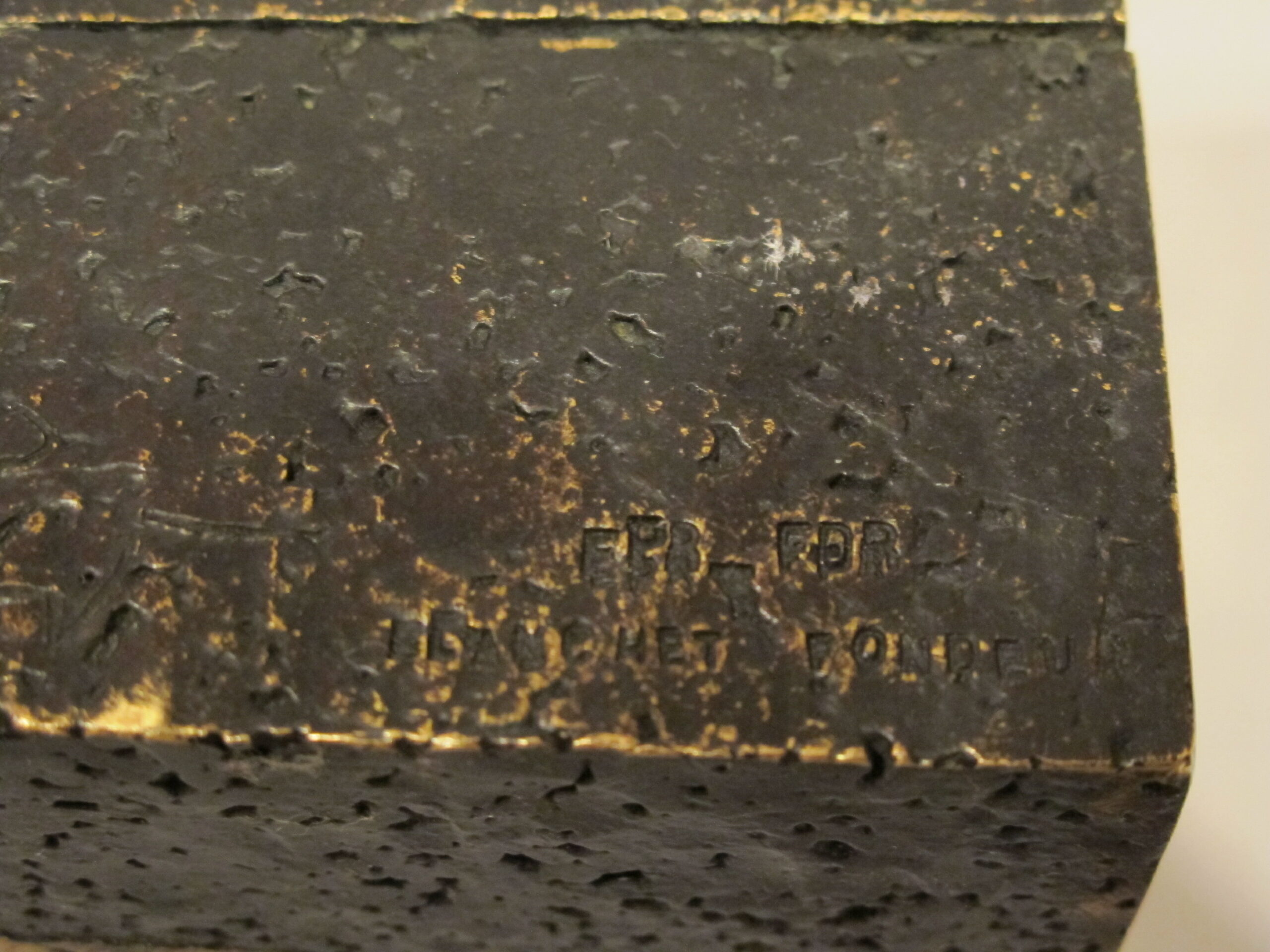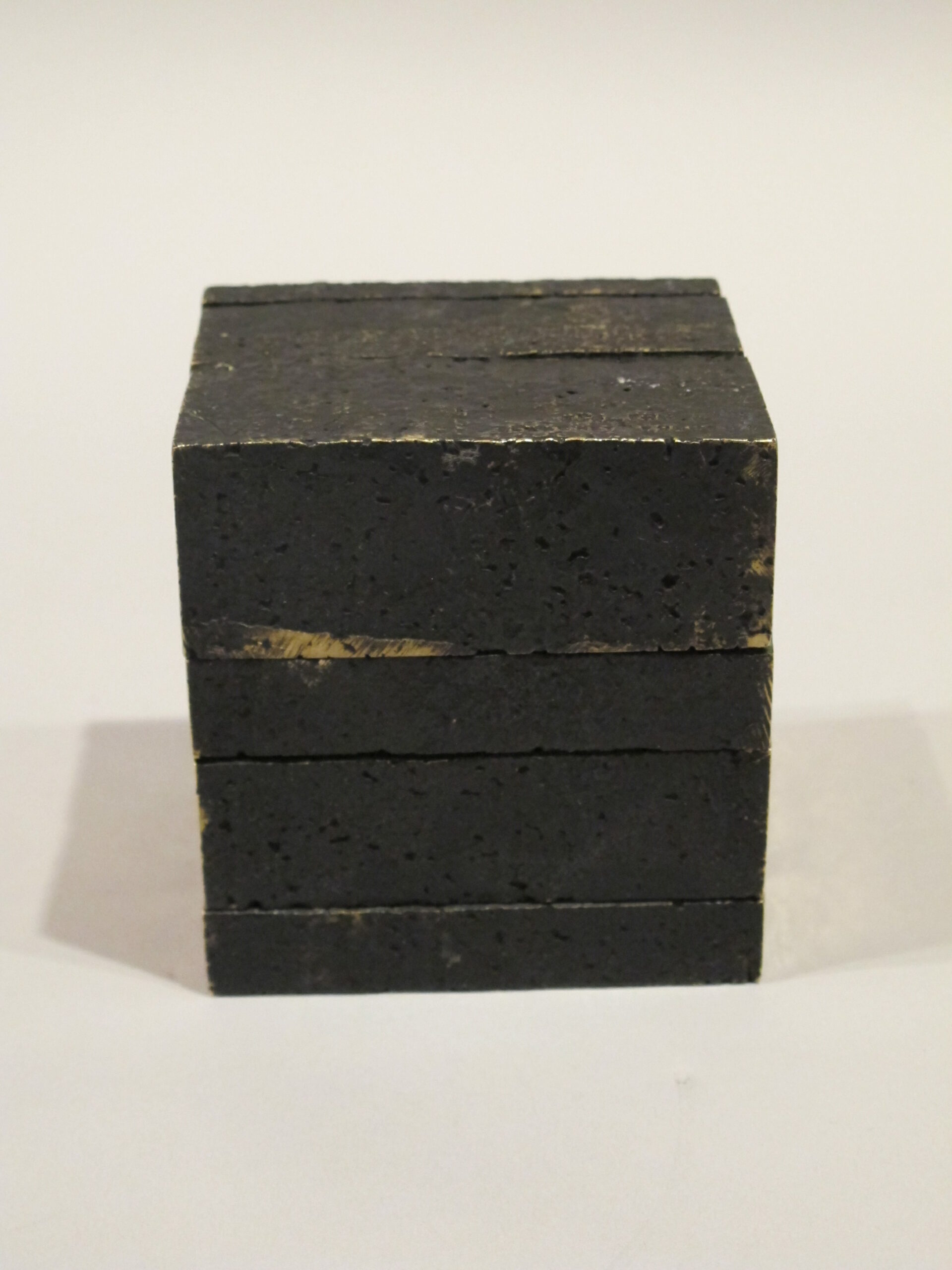Description
Biography :
The beginnings
In 1956, after a few weeks at the School of Decorative Arts where he was admitted, Ervin Patkai took part in the events in Budapest, then chose to go into exile in France. Refugee in Paris, he began his years of training at the National School of Fine Arts, in a sculpture studio, but he gradually distanced himself from the professed post-cubist tendencies, to engage in personal research on form. and the materials.
Monumental works
The quality of the works he exhibited in the Salons or group exhibitions, and his participation in the Grenoble symposium in 1967, brought him to the notice of official authorities, and the State entrusted him with his first order under the 1% in 1969. Over the years, he will thus produce a large number of monumental works in various schools and universities in several regions of France.
Workshop works
Driven by a reflection on art and spirituality, Patkai rejects art for art’s sake and focuses on translating his personal visions into diverse materials and complex forms. In reaction to cubism, he works on symmetry and moves towards a sculpture which, even in small formats, gives off a monumental effect. From the end of the 1970s, his work on urban planning did not fail to influence his production of studio works.
Patkai and Urbanism
His positions on the role of art and the artist in the city, but also his monumental achievements, where he was led to work closely with architects, appointed him to the artistic adviser for new towns when the Epamarne (Marne-la-Vallée public development establishment) proposes to carry out an experiment in a district of the new town, consisting of integrating a sculptor into its team of town planners and architects. Patkai will respond with an original and generous approach which, unfortunately, could not be carried out with the necessary means and time.
The writings
Convinced that he had a mission to fulfill as an artist, to awaken his contemporaries to a certain spirituality, Patkai has, on several occasions, expressed his ideas, his inspiration and his art, in the catalogs of his exhibitions, in conferences, in interviews. These texts help to better understand his work and reveal a man with a tormented and mystical personality.
The Hungarian Workshop
Patkai has been associated with this artistic review of Hungarians in exile since its creation. He was one of the founding members. He was more specifically responsible for what touched on the plastic arts
Collective exhibitions:
Paris Biennial: 1961
Salon de la Jeune sculpture: 1964, 1965, 1966.
Salon of New Realities, Paris: 1967
Maywald Gallery, Paris: 1967
Sculpture Symposium, Grenoble: 1967
Avignon Festival, The Eye Listens Exhibition: 1969
Outdoor sculpture exhibition, Mâcon: 1970
Plastic Arts Festival, Montargis: 1970
Exhibition of the Ministry of Cultural Affairs, Art and Architecture, assessment and problem of 1%, Halles de Baltard, Paris: 1970
Exhibition of the National Center for Contemporary Art, Parc Floral, Vincennes: 1971
Sénart Pheasantry Symposium: 1971
IV Morgan’s Paint International Biennial, Ravenna: 1972
Traveling exhibition organized by the Ministry of Foreign Affairs, Contemporary French Sculpture, New Zealand, Australia, Mexico: 1973
Exhibition Sculptures in the mountains, Plateau d’Assy: 1973
Personal exhibitions:
Sun Gallery, Paris: 1973
Traveling exhibition, Vesvres, Saint-Étienne, Orléans: 1974
Bibliography:
Denys Chevalier, Patkai, Sun Gallery, 1973
Patkai: Villedieu Cultural Center, Saint-Quentin en Yvelines, February 8 – February 29, 1980, Aries, 1979 (catalogue)
Marie-Paule Ritz, Art in the City: Artists’ Collaboration in Urban Planning; for example the participation of the sculptor Ervin Patkai in the Pavé Neuf district in the Ville Nouvelle of Marne la Vallée; an attempt to generalize the law of “10, 1980

